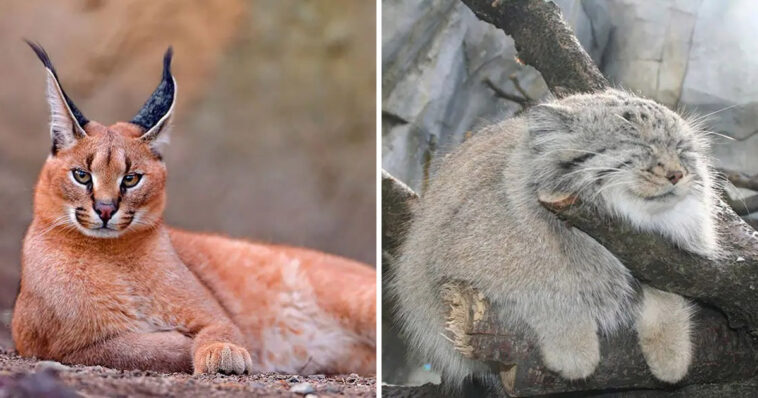We all know cats are part of the Felidae family, including big cats such as lions, tigers, leopards, jaguars, etc. However, the Felidae family isn’t just limited to the animals we are familiar with, because there’s an entire world of little and large cats out there, including several rare cat species you’ve probably never heard of!
Around 25 million years ago, cat species separated into their own family (Felidae). Since then, they’ve spread over the globe and adapted to fit their surroundings. They do share some characteristics, such as the fact that, like your domestic cat, relatively few wild cat breeds can sense sweetness. They’re carnivorous animals – they hunt and eat meat for a living. Apart from lions, few cats exhibit strong social behavior, however, some do hunt in groups or create loose colonies. It’s no surprise that our domesticated cats have such pompous, independent personalities!
Scroll down to see photos of some of the oddest and rare cats. This variety of cats, ranging from Asian to African cats, will undoubtedly widen your feline horizons!
(h/t: boredpanda, thewildlifediaries)
#1 Pallas Cat (Otocolobus Manul)
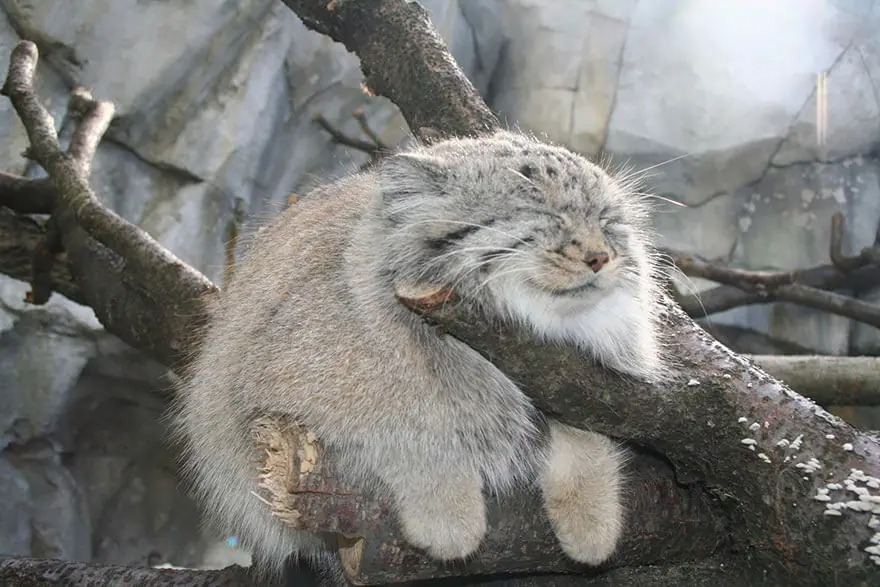
Pallas’ cats, also known as Manul, have the longest and thickest fur of any cat species. Their luscious, thick coat is to protect them from the windy, frigid weather in Central Asia. Caves, rock fissures, and even marmot burrows provide protection for the cat in the rocky habitat.
Pallas’ cats aren’t very fast runners, they rely on their camouflage skills. When disturbed, they would frequently stay still and blend in with the grey rocky environment.
#2 European Wildcat (Felis Silvestris)

The European wildcat has a patchy distribution in the forests of Western, Southern, Central, and Eastern Europe up to the Caucasus Mountains. They have the size of a large domestic cat but has longer legs, a larger, flatter head, and a full, relatively short tail.
#3 Chinese Mountain Cat (Felis Bieti)

From its name, we can imply that they come from China. They are rarely spotted and are listed in the IUCN red list, as the effective population size may be fewer than 10,000 mature breeding individuals.
#4 Canadian Lynx (Lynx Canadensis)

They are spotted in Alaska, Canada, and Northern USA. The huge paws wrapped with dense fur are their most noticeable characteristic. These paws act as snowshoes, allowing the Canada lynx to navigate over snowy terrain without sinking in the snow.
#5 Caracal (Caracal Caracal)

Caracal means “black ears” in Turkish, and it gets its name from their jet-black ears with tufts. A caracal can leap 3 meters into the air and swat multiple birds with a single stroke.
#6 Margay Cat (Leopardus Wiedii)
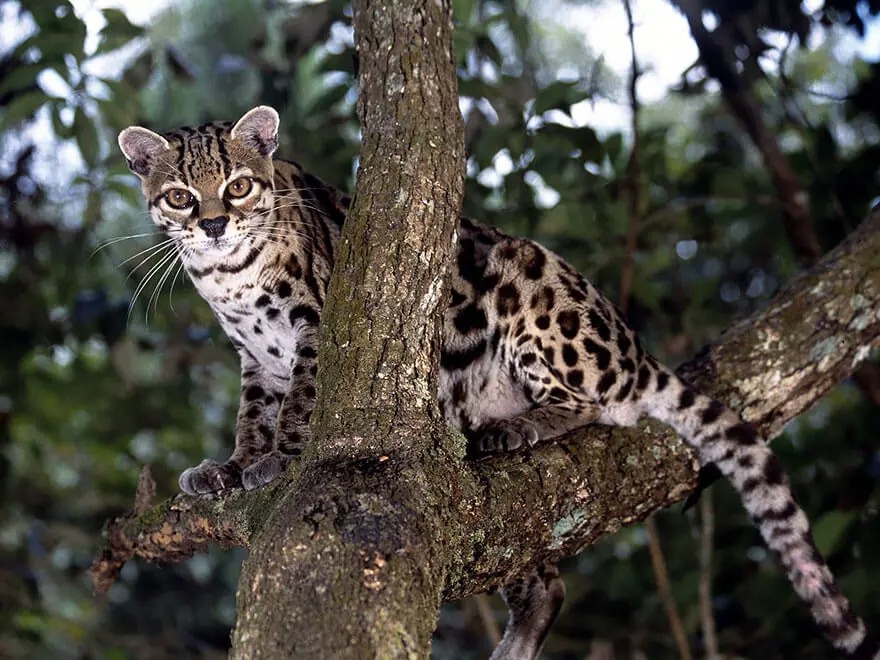
Margat Cat may have similar features to Ocelots, but they are smaller in size. However, they are more skilled in climbing trees, as they spend most time in the trees.
They are one of three wild cat species with a flexible ankle joint that allows them to climb down a tree head-first (the other two are the Clouded Leopard and the Marbled Cat).
#7 Andean Cat (Leopardus Jacobita)

Andean Cat is an endangered species that habitats in high elevations in the Andes in Southern Argentina, Chile, Bolivia, and Peru. They prefer steep, arid, and rocky terrain where their prey lives – mountain Viscachas.
#8 Serval (Leptailurus Serval)
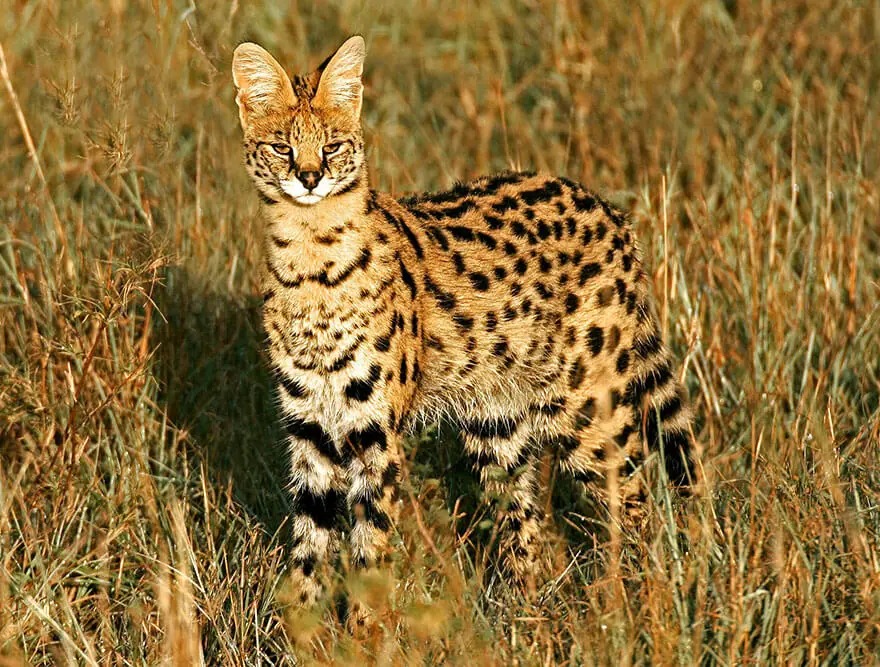
Servals are distinguished by their exceptionally long legs, huge ears, and short tail. All of these adaptations are required for it to locate prey in the tall grass in which it dwells. It’s common in Southern Africa, but not so often in the rest of the continent.
Even with its eyes closed, this feline can leap up to 3.6 meters to land precisely on its prey.
#9 Asian Golden Cat (Catopuma Temminckii)

They are medium-sized felines that live in the North-Eastern Indian subcontinent, Southeast Asia, and southern China. Since 2008, it has been included on the IUCN Red List as Near Threatened, and it is threatened by hunting pressure and habitat degradation
#10 Flat-headed Cat (Felis Planiceps)

The Flat-headed cat is a small, endangered species found on the Thai-Malay Peninsula, as well as the islands of Borneo and Sumatra. This peculiar feline lives on riverbanks and hunts aquatic animals in a semi-aquatic environment.
It has unique adaptations to hunting in the water and is an excellent swimmer. Its claws do not fully retract, allowing it to maintain a firm grip on the slippery riverbanks.
#11 Sand Cat (Felis Margarita)

The sand cat is a real desert dweller that can be found in North Africa, Middle East, and Central Asia. While not endangered, this species is difficult to spot.
The sand cat has a thick, dense coat that keeps it warm on cold desert nights. The dense black fur on its feet protects it from the other extreme factors, such as the scorching heat of the sand.
#12 Rusty Spotted Cat (Prionailurus Rubiginosus)
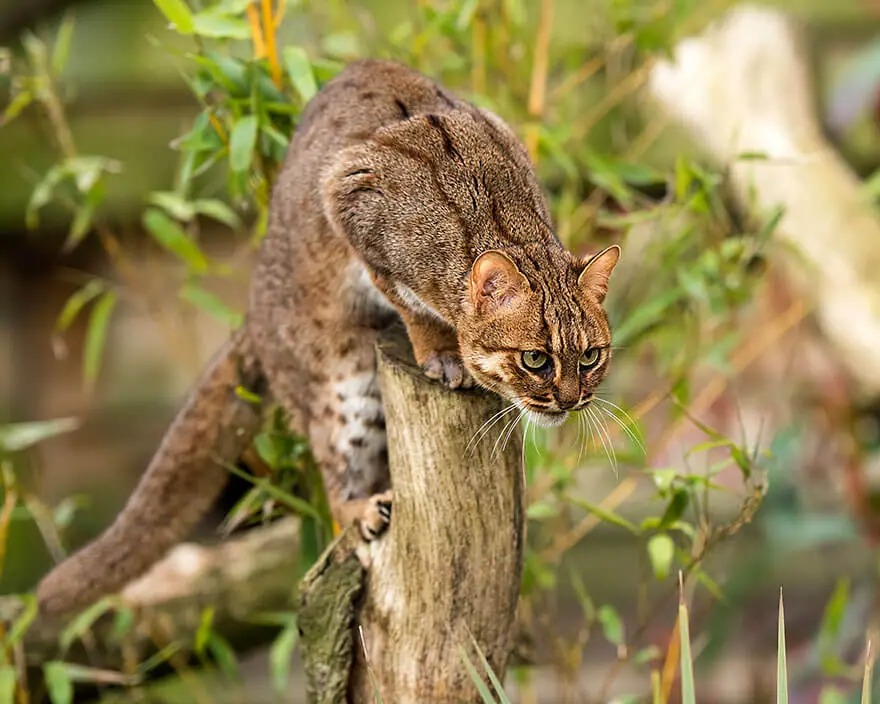
The Rusty-spotted cat is the smallest species in the family. They are found in India and Sri Lanka’s deciduous forests. They usually reach a maximum weight of 1.6kg and a length of 48 cm.
Though having a petite figure, they make up for the flaw with a bold attitude. They stay both on the ground and on the trees, where it uses swift, darting movements to catch prey (mainly rodents and small birds).
#13 Black-footed Cat (Felis Nigripes)

World’s second tiniest wild cat – Black-footed cat, is a skilled predator with a voracious appetite, consuming up to 3,000 rodents every year. It’s known as the anthill tiger, as it lives in abandoned termite mounds and hunts for rodents in the surrounding savannah.
#14 Clouded Leopard (Neofelis Nebulosa)

The Clouded Leopards are the smallest among large cat species, but also the most acrobatic. They are one of the most skilled climbers in the wild cat family. They can climb down trees head-first, hang off branches with their hind feet and tail, and even climb on horizontal branches with their back to the ground thanks to its flexible ankle joints.
Yet climbing is not their only skill. They are the only big cats that can purr and they have the longest canines, relative to body size, among big cats. Sometimes, they are referred to as the “modern-day saber-tooth”.
#15 Pampas Cat (Leopardus Pajeros)

Pampas Cat primarily inhabits open grasslands and humid forests around South America. They hunt small mammals such as guinea pigs, or ground-dwelling birds such as penguins’ eggs and chickens. They are also believed to be terrestrial and mostly nocturnal.
#16 Leopard Cat (Prionailurus Bengalensis)

The Leopard cat is the most widely distributed of all Asian small cats, with a distribution spanning South, Southeast, and East Asia. This species is relatively resistant to human appearance and can be found in rural regions as well as oil palm farms.
#17 Kodkod (Leopardus Guigna)

The Kodkods have a small size compared to other felines. They are among the tiniest cats in the family. Their little bodies are clothed in grayish-brown to buff fur with numerous small black dots that produce broken streaks on its head and neck.
#18 Ocelot (Leopardus Pardalis)

Ocelot used to be worshipped and depicted in art by the Moche people of ancient Peru.
They can grow up to a meter in length and are nocturnal creatures, meaning that they are more active at dusk and sleep a lot during the day. Much like your cat at home!
#19 Fishing Cat (Prionailurus Viverrinus)

Much like the Flat-headed cat, Fishing cats are also a species that is not wary of water, they also hunt fish and tiny aquatic animals.
The Fishing cat has a larger area of distribution in South and Southeast Asia. They can also be found in Sri Lanka, particularly in Sigiriya and on the edges of Yala National Park.
#20 Jaguarundi

The jaguarundi is one of the strangest-looking cats, with its small legs and large body. It shares the same unspotted coloration as the puma, its closest relative. It can be found throughout Southern North and South America.
#21 Bay Cat (Catopuma Badia)
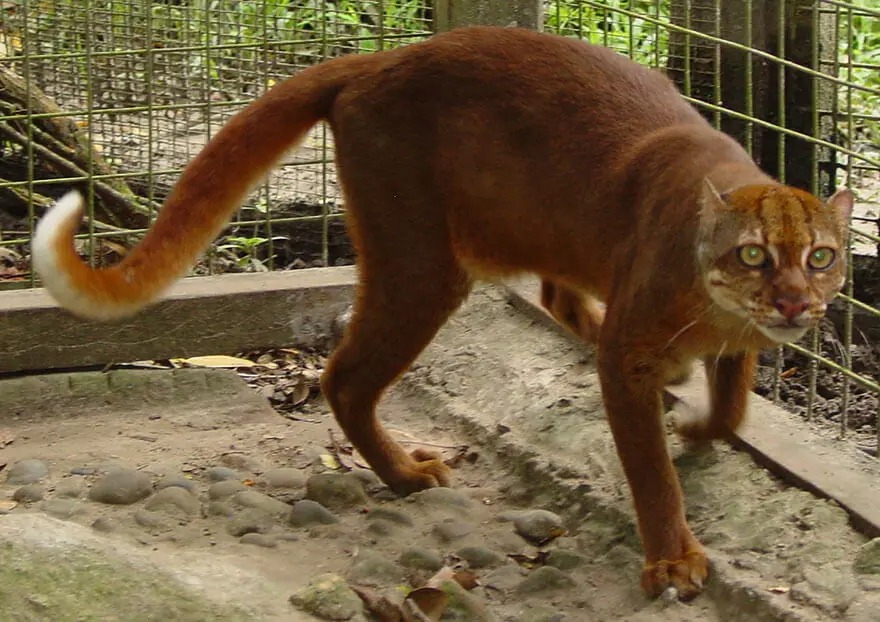
The Bay cat is one of the world’s most unusual wild cat species. This species can only be found on Borneo’s island. Forests, mangroves, marshes, and locations near rivers are all good places to look for it. The bay cat can live at a height of 5,900 feet and is easily distinguished due to its bright chestnut color.

